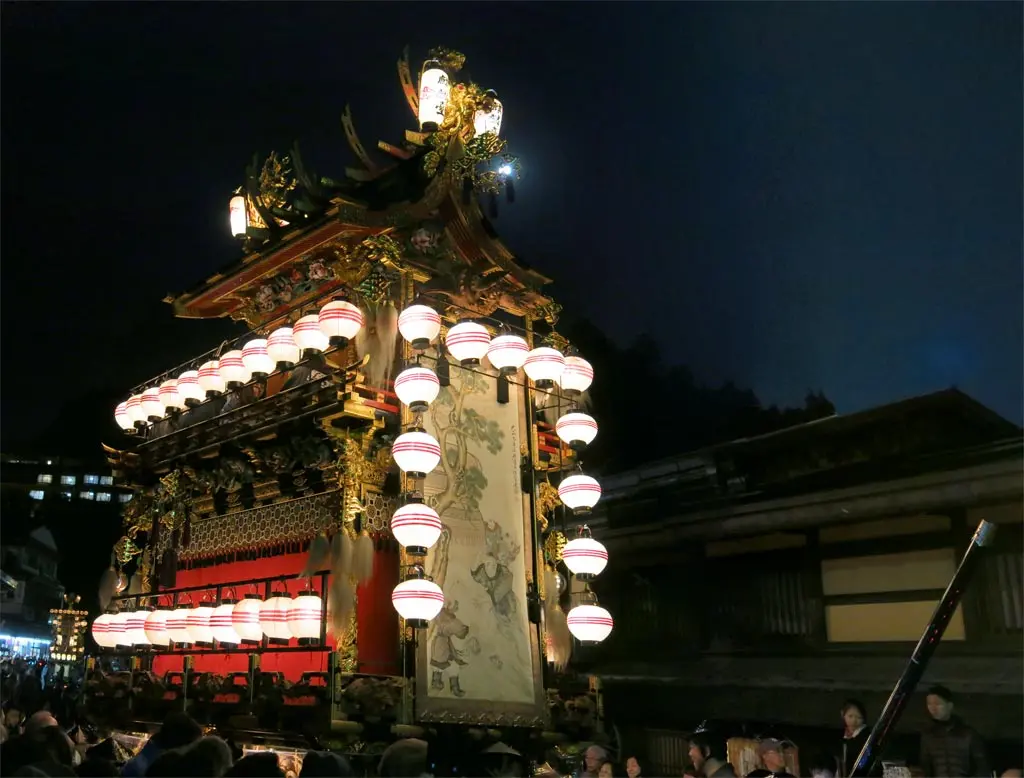One of the biggest attractions to Takayama every year is the Takayama Matsuri, or Takayama Festival. It's held twice a year. For 2 days in April, and 2 days in October. Both festivals are basically the same, but take place in different parts of the town, with different neighborhoods, and celebrating a different shrine. On April 14th and 15th every year, Takayama celebrates the Sanno Matsuri, or more commonly called, The Spring Festival. On October 9th and 10th, they celebrate the Hachiman Matsuri, or simply Fall Festival.
This year, those dates fell on a Monday and a Tuesday, so most people in Takayama couldn't attend the major events held during the day. Some schools let their students go around Noon on Monday, but the teachers still stayed in school and attended meetings and such.
The festival has 4 specific events held throughout the two days. In addition, many other business open to the public, especially the Sake breweries downtown.
Yatai Hikisoroe means Float Gathering.
The center pieces of the Takayama Matsuri are the floats, or yatai. Each festival has its legion of floats. This is pretty much the only time in the entire year they're taken out of their garages and displayed around town. There are 12 floats in the Spring Festival, and on both days you can view the floats from 9:30 to 4:00 in designated areas in town.
Karakuri Hounou basically means marionette presentation.
Some of the float have complicated internal wiring that controls a mechanical doll sitting on the front of the float. There are 4 times throughout the Spring Festival when 3 doll-controlling floats will gather in the square in front of the Takayama Shrine, and perform their presentations. Several neighborhood members perform music, and the dolls come alive and dance on the float.
These happened during the day, so I was unable to attend this year.
Gojunkou is the daily parade from the Sanno Shrine and through the streets of Takayama. This happens on both days in the afternoon.
This is the main event of the Festival each year, the Yoru Matsuri, or Night Festival. After sundown on the first night, the floats are illuminated with lanterns, and paraded through the streets of Takayama. They start near the Takayama Shrine, and are pulled through the old streets, Kokubunji, and then back to the start, making one lap.
For this year, it was the only part of the festival I was able to attend.
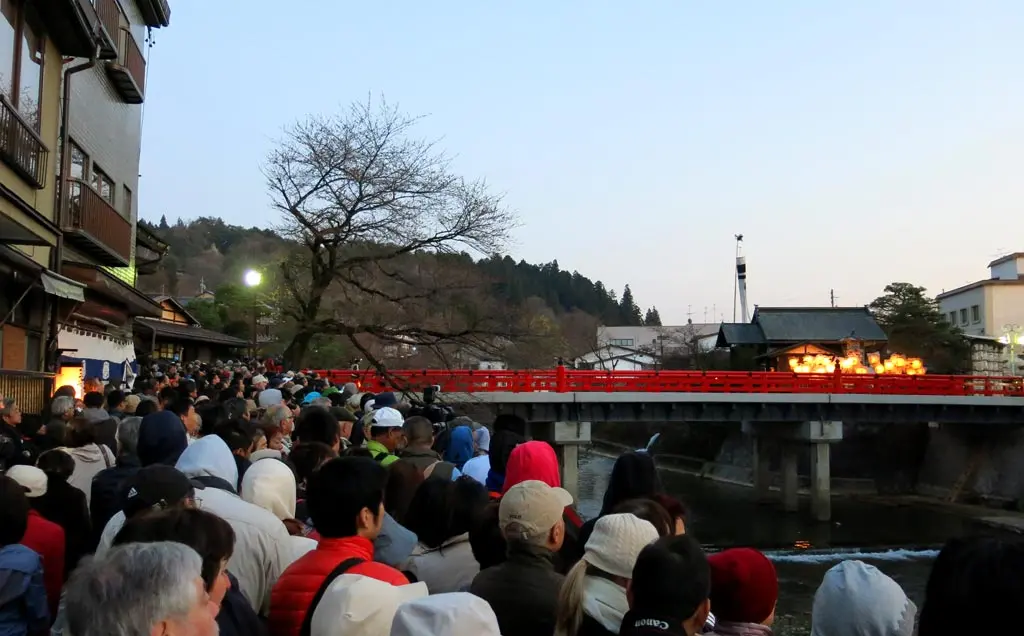
Many other people were there, too. The Takayama Board of Tourism does a great job pulling a few thousand people into Takayama for these festivals. There's plenty of Japanese tourists, and plenty of foreign tourists, too. I hadn't heard of Takayama before I came here, but they have a pretty strong presence in some foreign tour books and programs. Everyone I asked how they heard about the festival said it was on their tour schedule, or came recommended from some else who had already toured through here.
Anyway, people started gathering around 6:00, but the parade didn't start going until about 7:00.
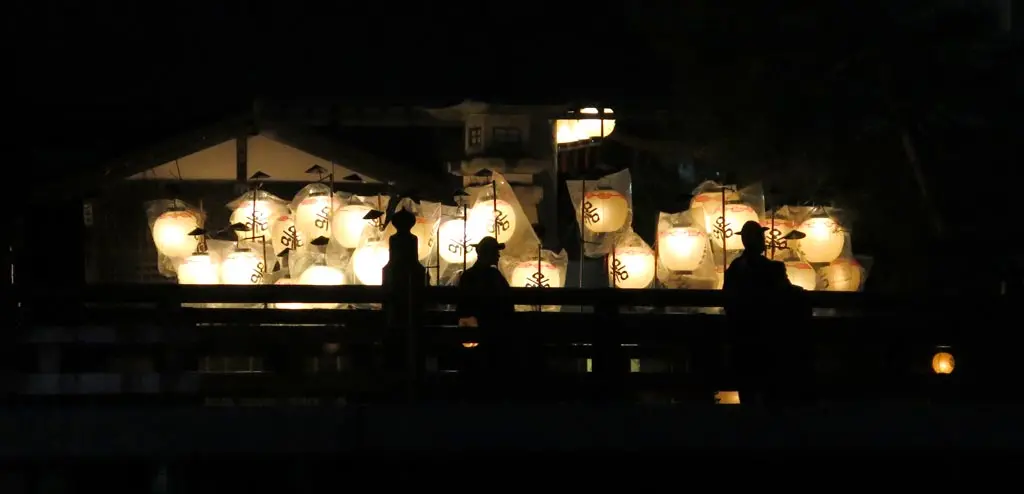
The parade started with a dragon dance. Then after, all 12 brightly lit floats were pulled through the streets.
By the way, the following information is mostly taken from the Takayama website, and the pamphlets handed out around town during the festival.
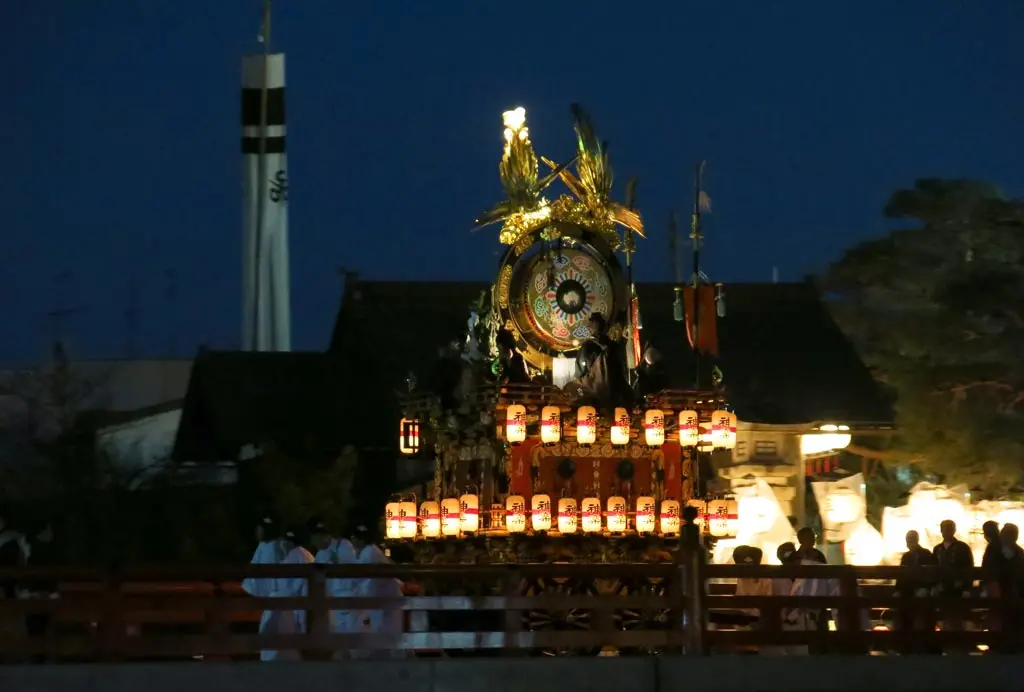
Kaguratai is the first float in the parade, and has always been first since the very beginning of the festival. Like many of the float names, the 'tai' suffix is shorthand for yatai, or float. The term 'kagura' stands for god's entertainment, or dance for the gods. Throughout Japan, many cities and villages have their own renditions of kagura.
Two men stand on both sides of the Kaguratai and pound the massive drum that the preceding dragons move to. It's also known as "The Way Opener" and signals the front of the parade and introduces all the oncoming floats.
Yoroku Taniguchi was an artist from the late Edo period, and he made many improvements to the floats in the parade. In 1854, he improved Kaguratai, and to this day his descendants still own and maintain the float for this parade. Much of his art is displayed around town, too.
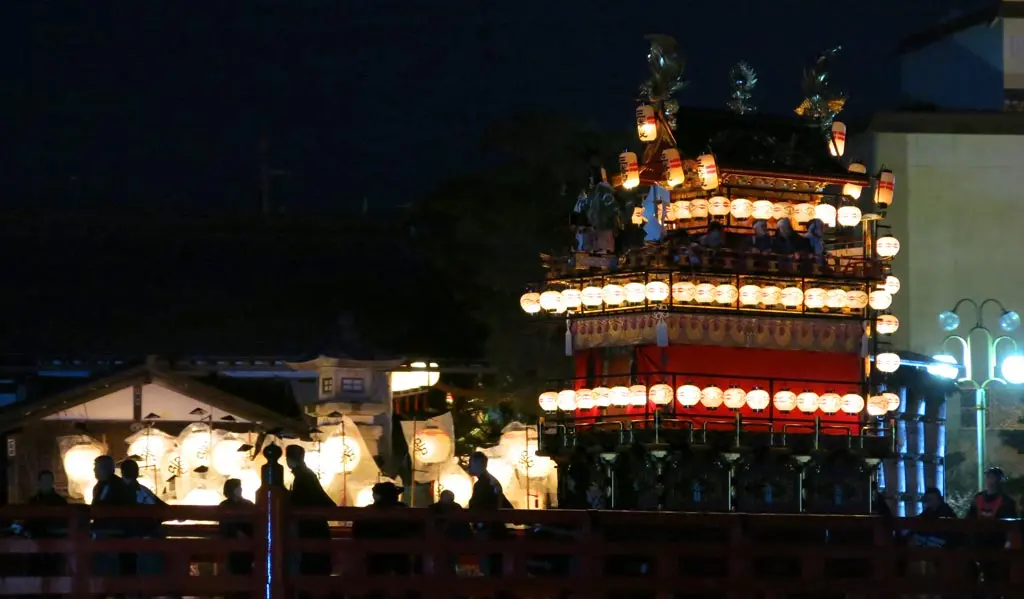
Second in the parade is Sanbasou, and prominently has a marionette on the front of the float. Sanbasou comes in right behind Kaguratai because the marionette's dance matches the rhythm of the drums, and the Kabuki style of the music.
In the Karakuri Hounou, the puppet dance, this marionette is the first to perform.
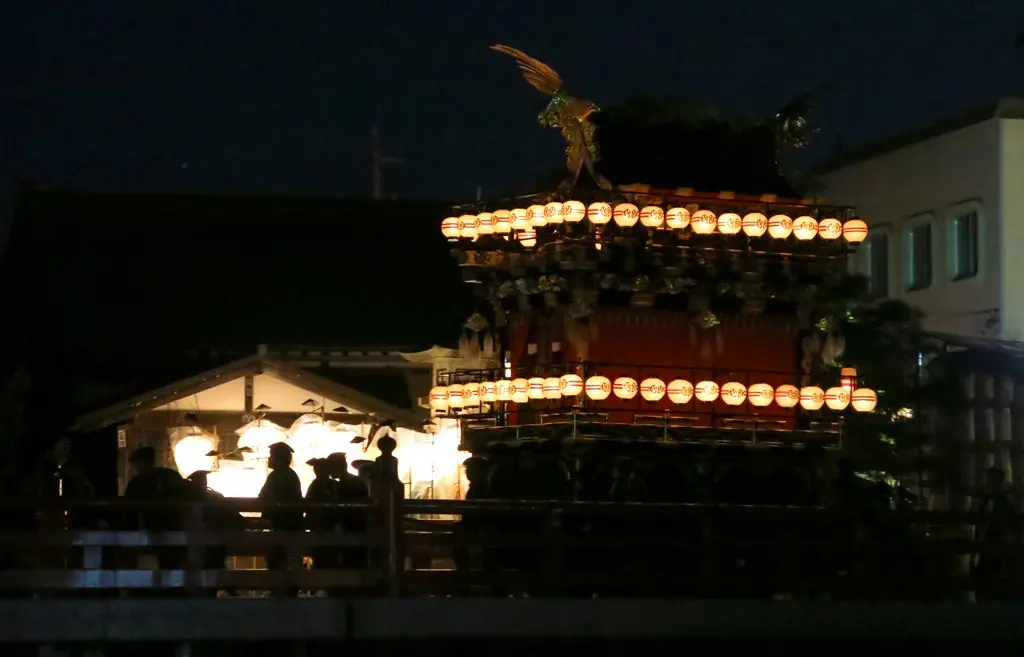
Shakkyoutai is third in the parade, and the second float to showcase a marionette, though the marionette was removed for the Night Festival. It also performs second in the Karakuri Hounou.
Shakkyou stands for Stone Bridge, but I don't think that has anything to do with the design. I think the marionette is supposed to be a merchant.
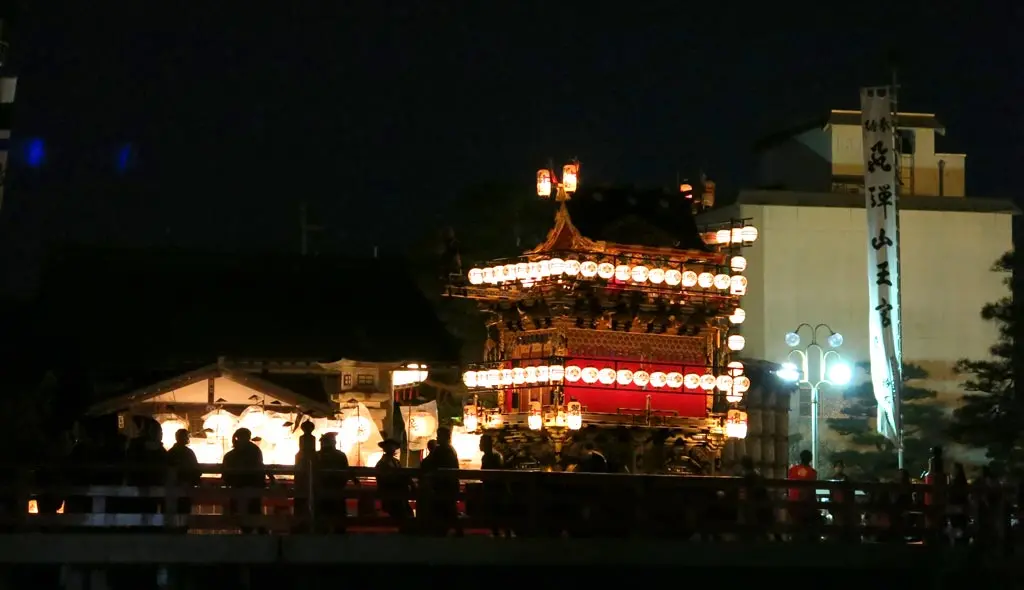
Ryuujintai is number four. It's also the third and final float to perform in the Karakuri Hounou. Throughout the Night Festival, the operators in the float would reset the puppet, and re-perform the Karakuri dance spewing confetti while its limbs flail about.
龍, or Ryuu, means dragon. Jin typically means person, but with 神 as the kanji, it stands for god. Ryuujin is Dragon God, and that's the name of the puppet. It performs the dragon dance. And the float has markings of dragons all over it.
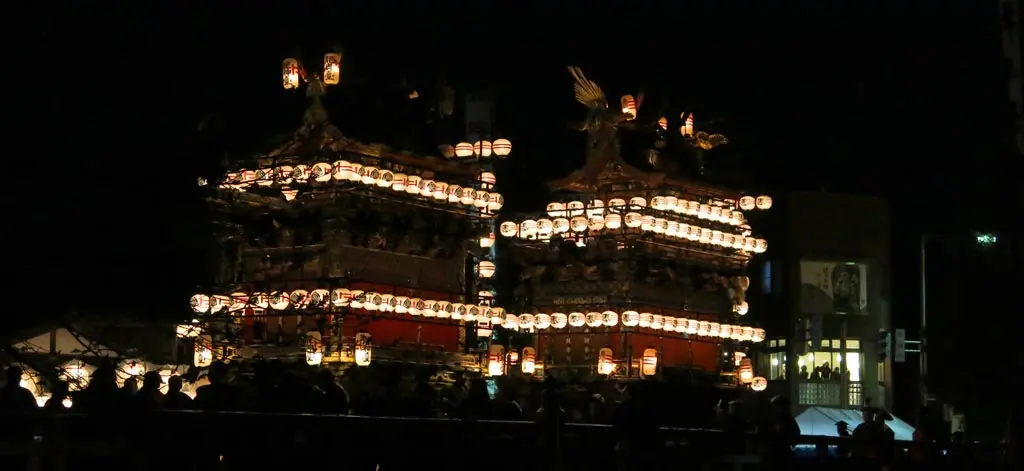
Ebisutai is the one on the right, behind Ryuujintai.
While Ebisutai became part of the parade as early as 1764, the modern design of the float was updated and improved by Yoroku Taniguchi. He carved ten lions in the wood around the lower part of the float. Each face of the lion is different and meant to show human expressions.
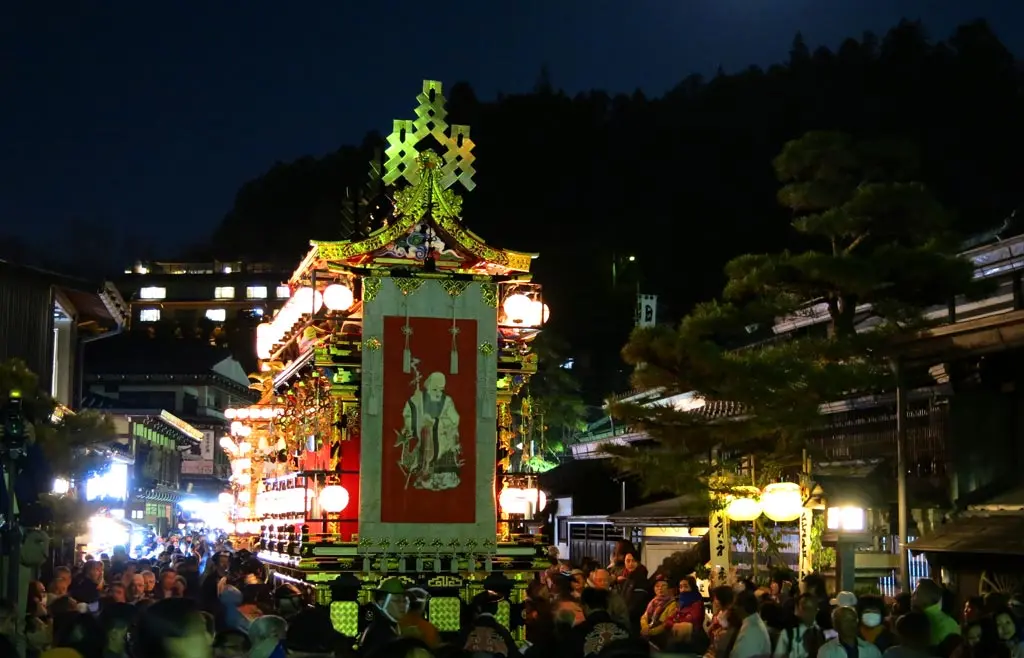
Konkoutai gets its name from a gold mine in China. Much of the decoration on the float originates in China, or is made to seem so, especially the tapestry.
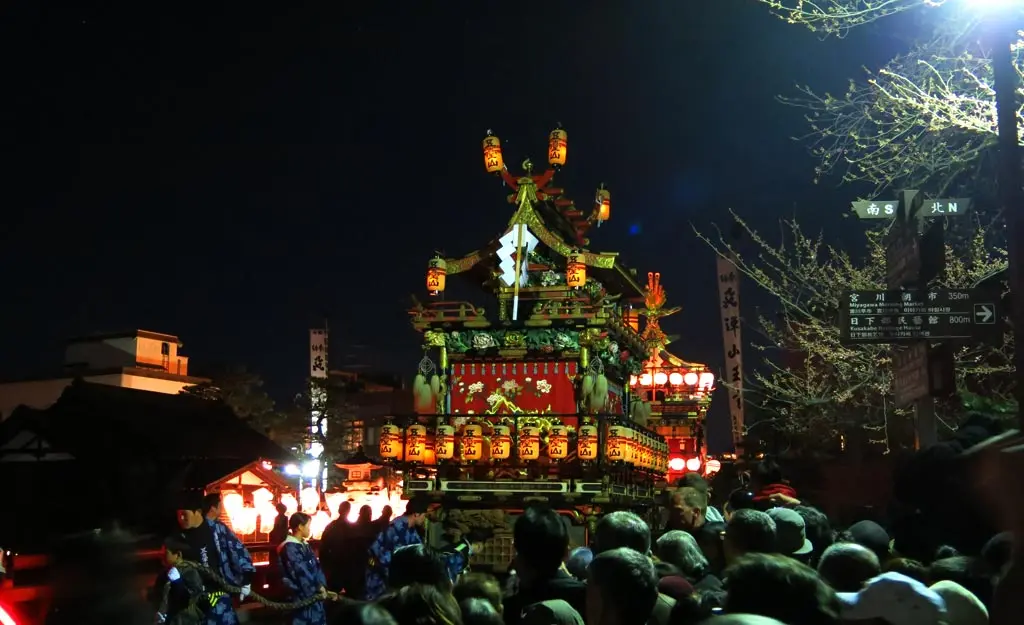
Godaisan is a very regal float. It's meant to be noble and have an air about itself that represents grace and statehood.

According to the website, Hououtai is known for its detailed construction. The Halberd on the top of the roof should be comparable to the Gion Floats in Kyoto. Though, in the image above, you can't really see the massive blade. I think they removed it.
Also, this float was destroyed by fire in 1834 and later reconstructed. Perhaps the metal blade on the top acted as a lightning rod.
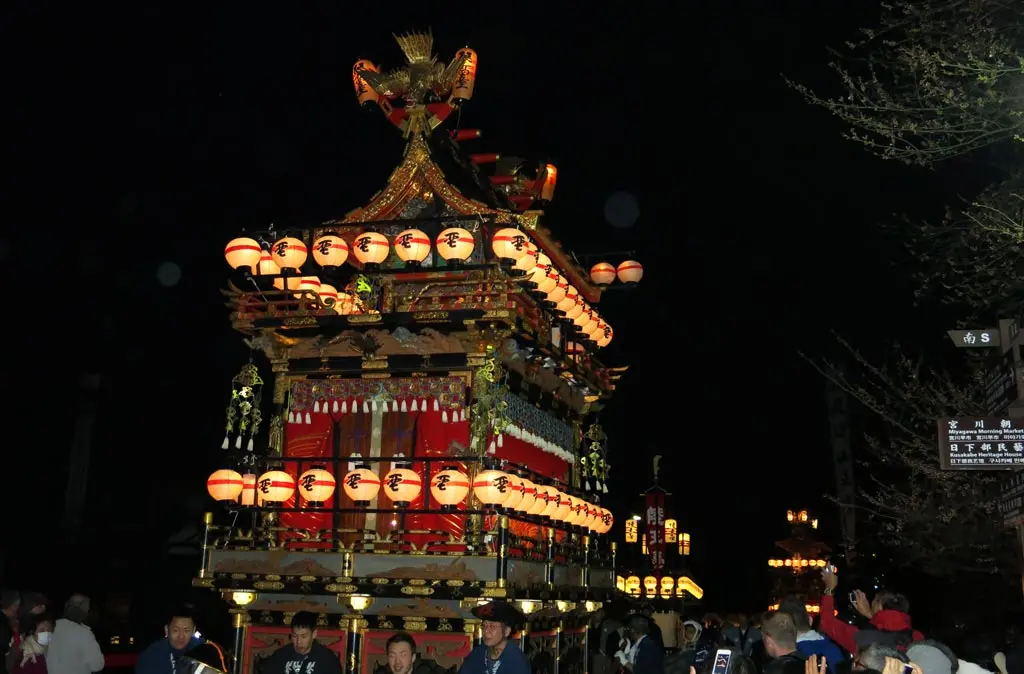
Much like a few other floats, Kinkoutai was reconstructed and redesigned by artist Yoroku Taniguchi. The tapestry surrounding the cabin of the float has a golden swimming carp, and many other golden carp are carved into the wooden pillars.
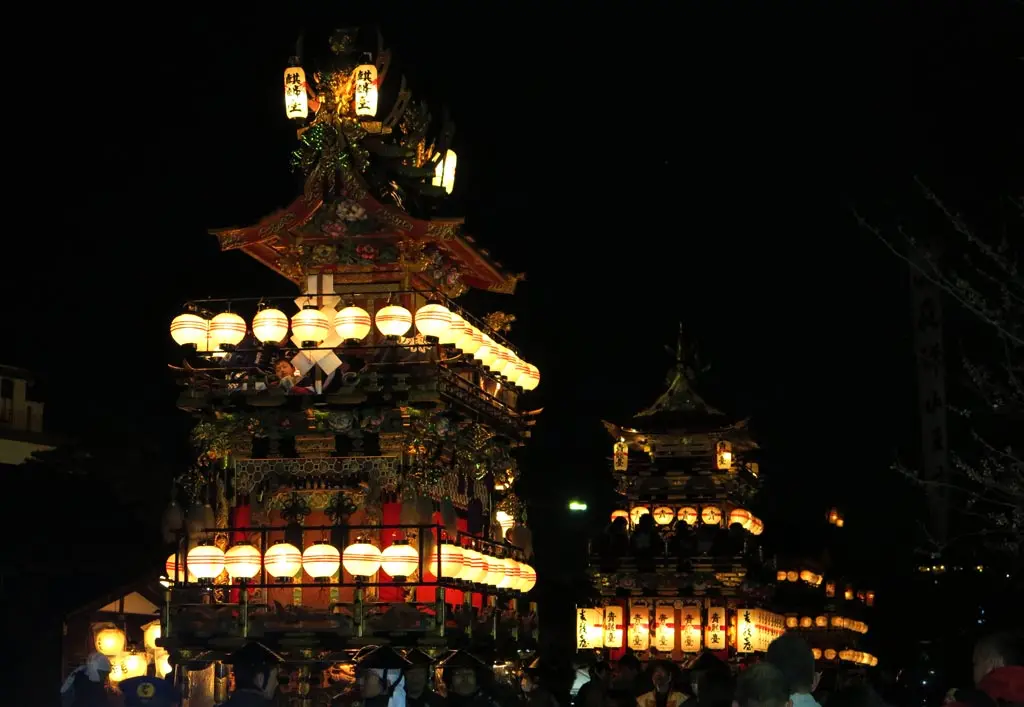
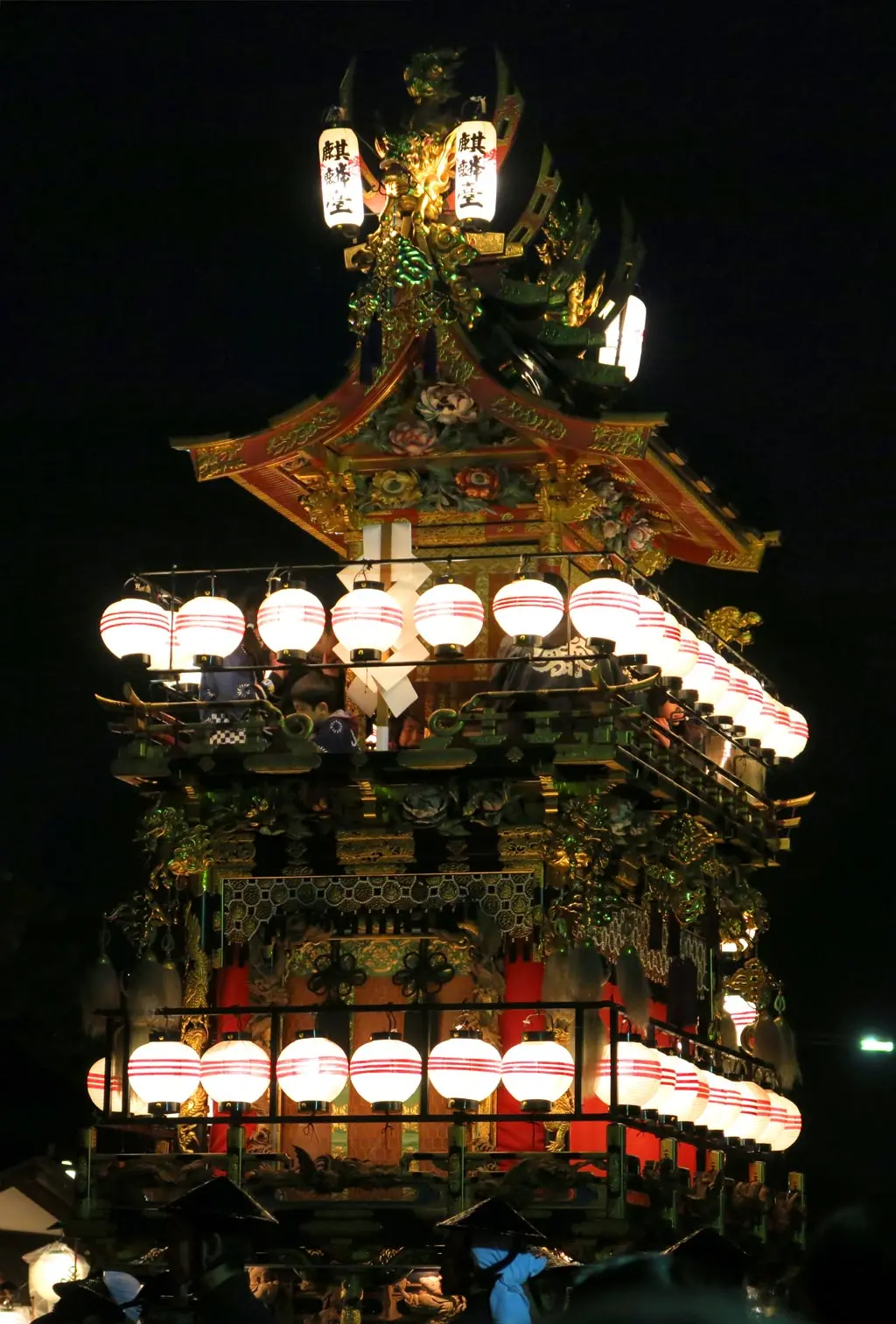
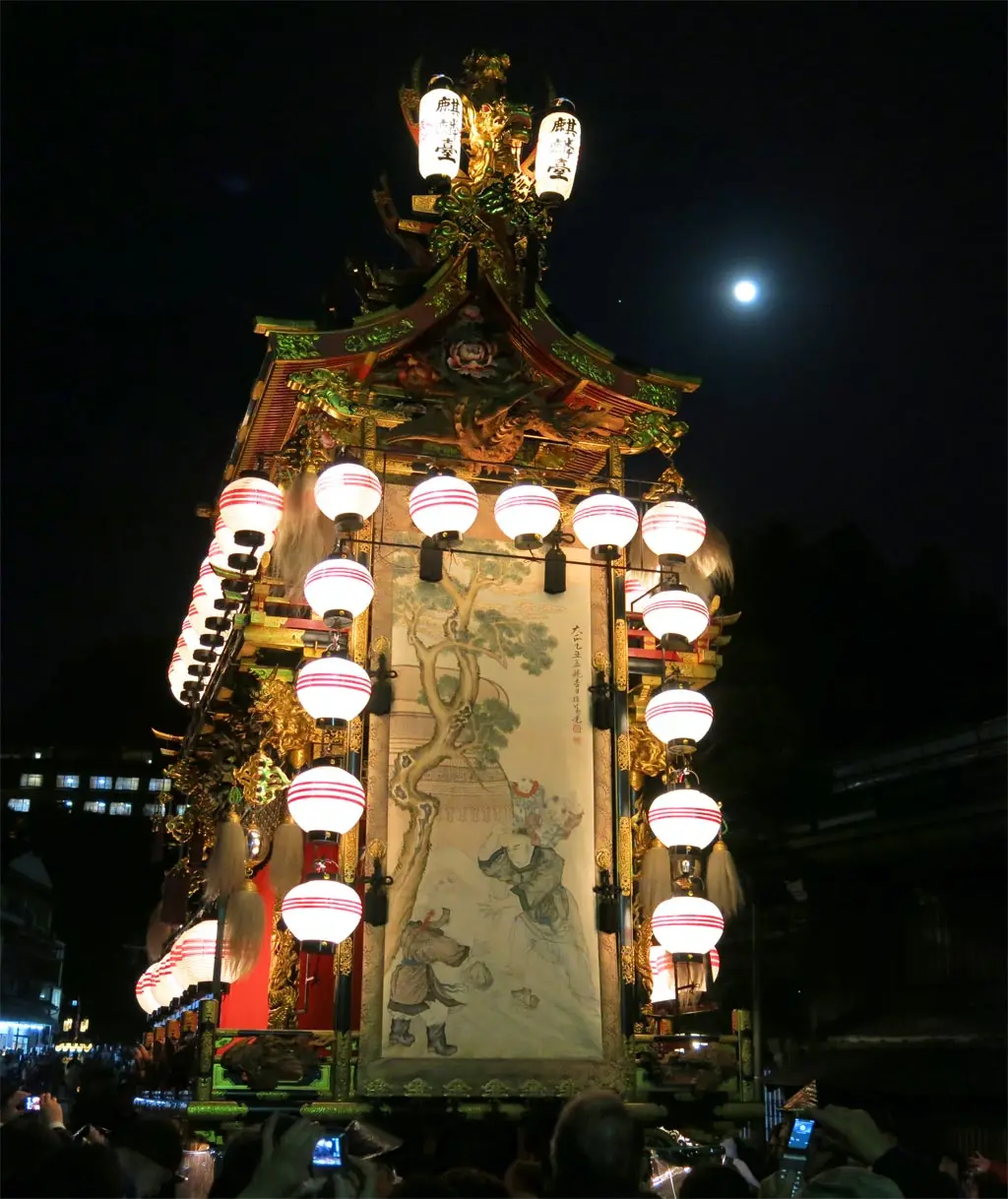
According to the website, the designs on the Kirintai are thought to be one of Takayama's most distinctive masterpieces of art. It's certainly the one I remember the most for some reason. And it was sitting there in front me for the longest time, so I was able to get a lot of photos of it, too.
Also, Kirin is Japanese for Giraffe. Which follows that all the animal designs on the float are giraffes. I wonder if it's the tallest float...
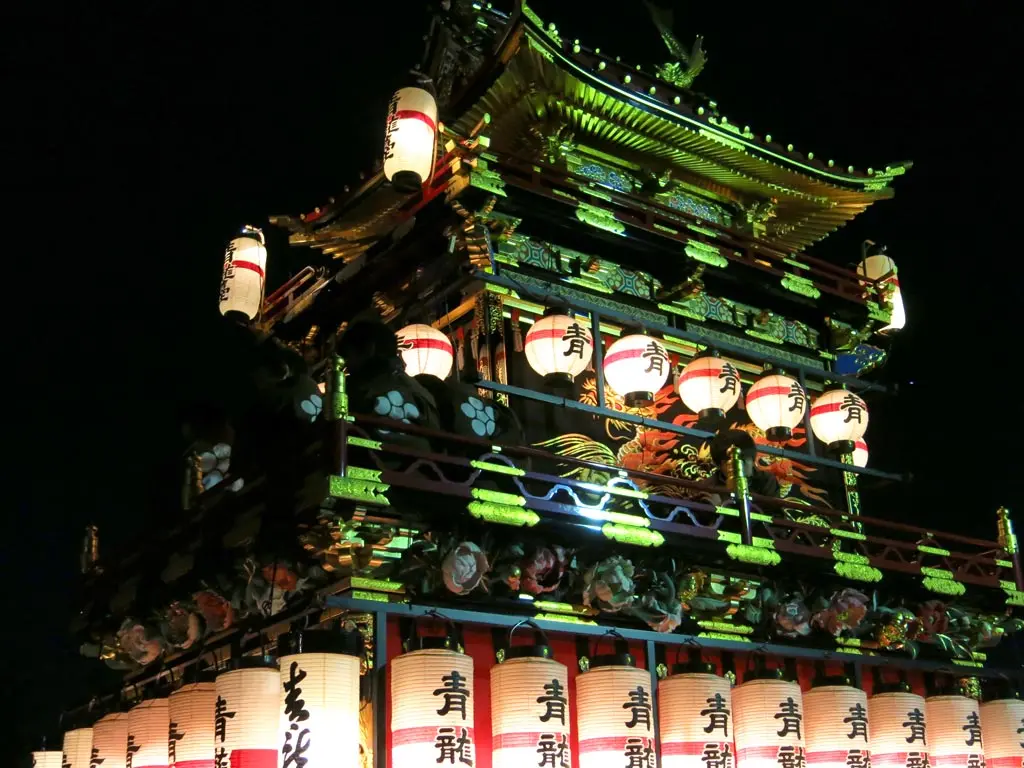
This is the Seiryuutai. Again, ryuu is Japanese for dragon. The kanji for sei is ao, which is Blue. So, Blue Dragon. But, that's the literal translation. It's english name is the Azure Dragon, and in Japan it represents one of the four guardian spirits of Kyoto. Seiryuu protects the east side of Kyoto. The famous Kiyomizu-dera is a shrine detected to this dragon. In addition to representing east, Seiryuu also represents Spring of the four seasons. There's also the five elements, too. Seiryuu represents wood.
The most distinct feature of this float is the castle-like roof on the top complete with golden dolphins on each side, which doesn't really go with the Seiryuu name… The wood carvings on the float show the life of a peony flower from birth to death.
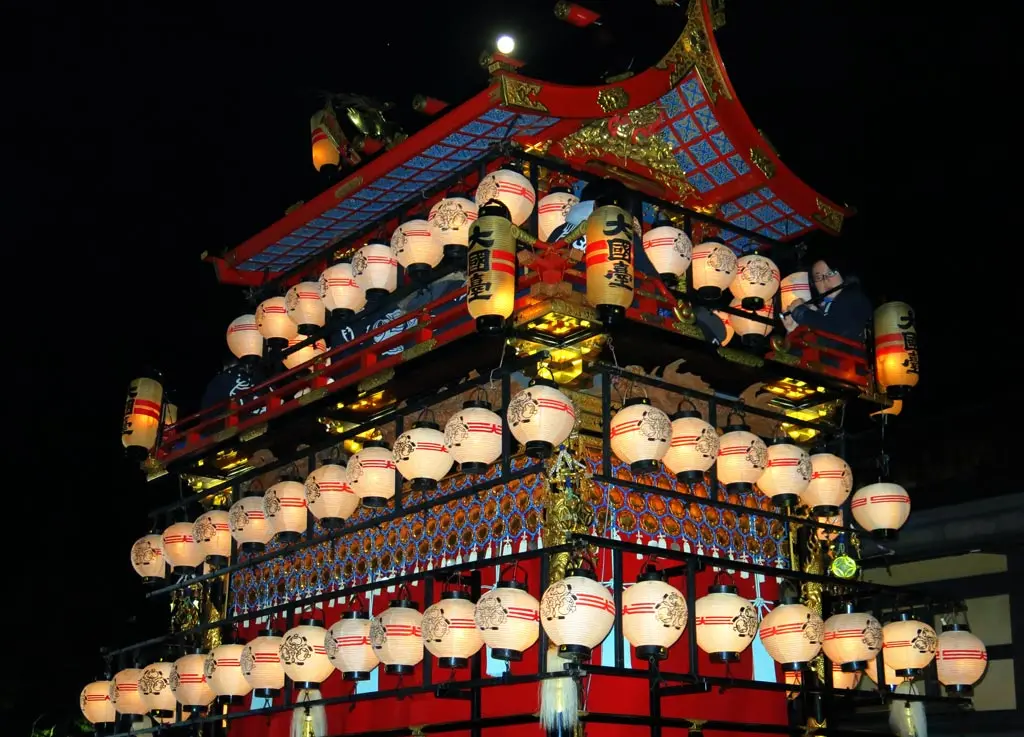
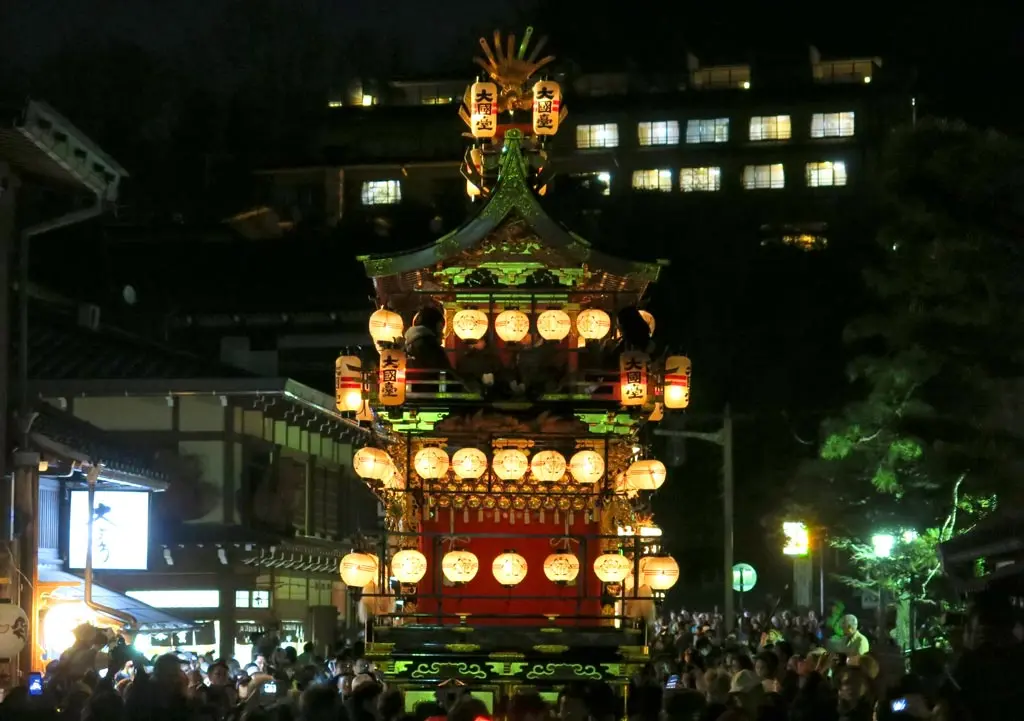
The final float in the Night Festival in Daikokutai. Dai means big, and Koku means country, but uses the old outdated kanji, which makes sense given how old and historic these floats are. This float was constructed in 1796.
Daikoku-ten is actually one of the seven gods of fortune in Japan. He is the god of great darkness, and is derived from Shiva in Hinduism. He is associated with an old Japanese custom known as "theft of fortune." Basically, you were awarded good luck if you were able to steal religious symbols without being caught. He is also associated with wealth of food and kitchen, too, and is often seen seated near bales of rice.
Anyway, this float was actually "adopted" from another community, rather than native to the Takayama festival.
I was actually really close to the starting position of the parade, so the last float passed by me just a little bit after 8:00. The crowds around me began to disperse, but the parade was far from over. This was merely the first leg of its journey through Takayama. It was simply the first edge of a square.
I started walking back through the old streets. As I came to the larger streets, I could look down to my right and see the floats going through the crowds of people.
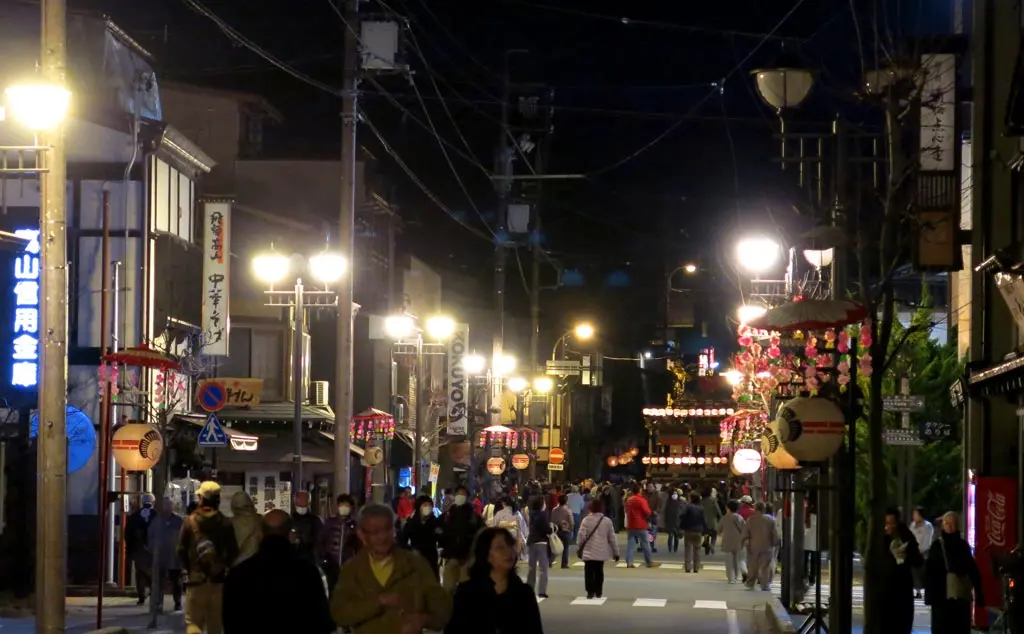
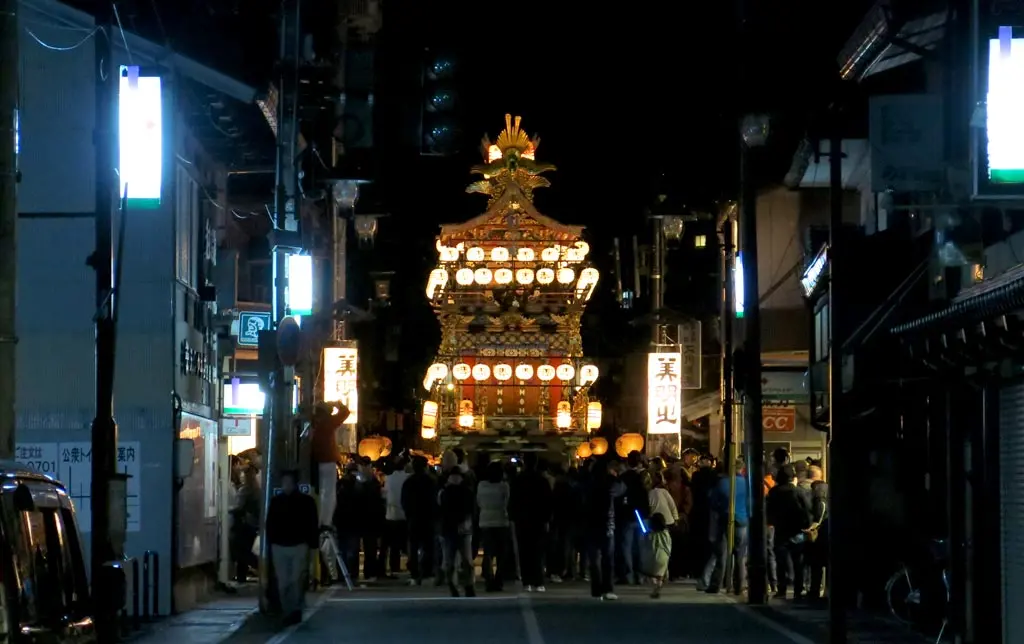
Firstly above you can Hououtai in the distance. And in the second photo, I think that's Ebisutai.
It was so weird. It felt like I was standing there for a long time, taking photos and watching the floats go by. And it only took a 5 minute walk going back home to completely catch up to the front of the parade passing by a crowd seeing the float for the first time. It is also got SO dark SO fast that it was hard to believe it was only 8:00.
It was also interesting to see all the random places opened up at night. As I walked home, I came across a World War II memorabilia museum. It was complete with a motorcycle, several machine guns, and tons of uniforms from both Japan and the US. I didn't even know that place was there! I wonder how often that place is actually open.
Anyway, that's the parade. The weather was absolutely perfect. A cool 50 or 60 degrees with clear, clean, pure, crisp air. The following days were a little warmer, but were very hazy, and felt polluted. :(
